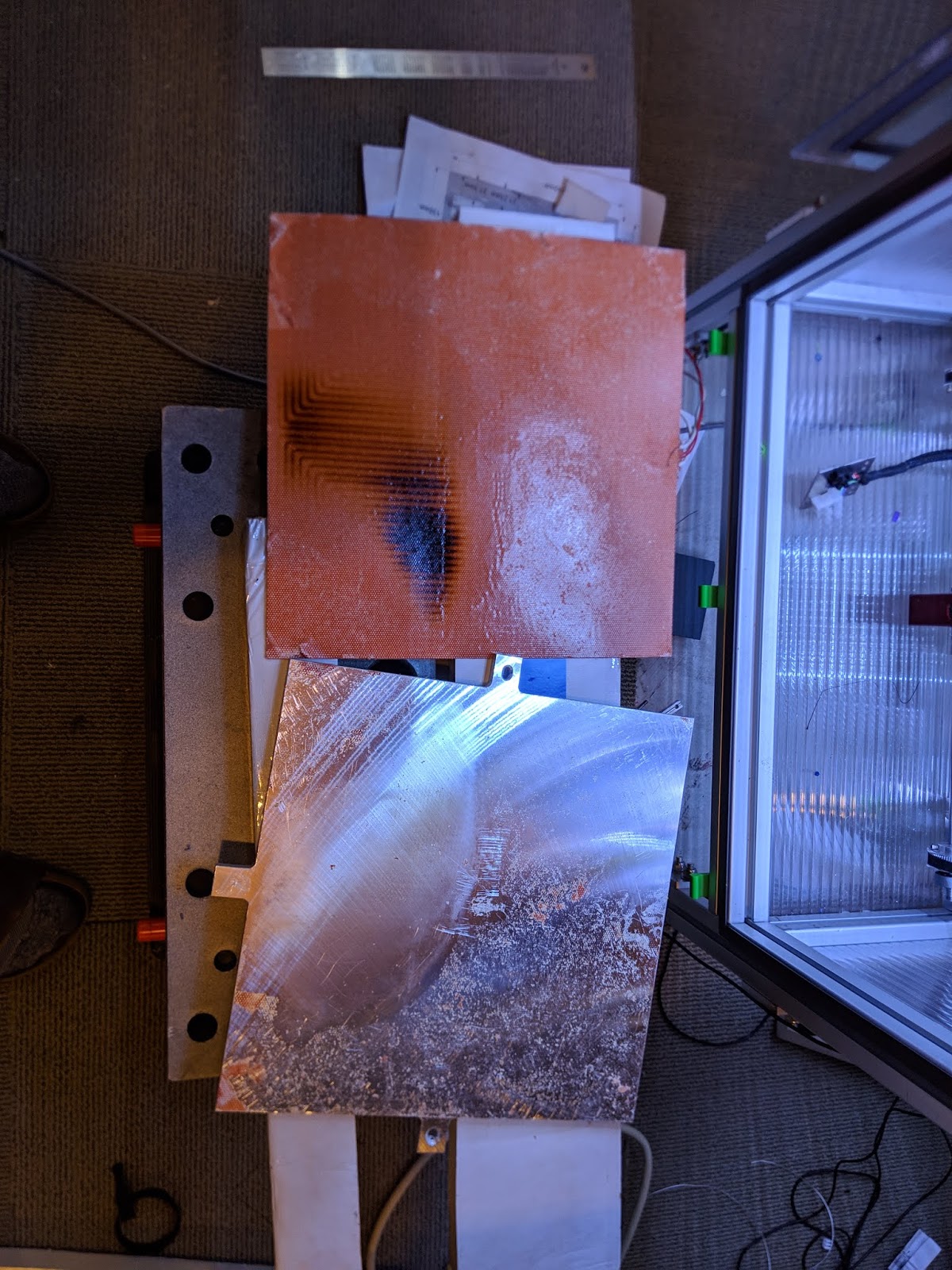How well does RTV silicone stick to a silicone heater?
-
It's common to use 3M adhesive stickers on silicone heaters. Would RTV silicone work instead to stick the heater and an aluminum surface?
I like RTV because it is convenient and available, but would there be a better option?
-
Yes RTV silicone works great and is the recommended method. You can get the high temp copper laden version for good thermal properties as well. Also be aware that once it's bonded, it's not coming off. Clean the surfaces with soap and water and then alcohol.
-
@phaedrux Thank you!
-
@hebigt The 3M adhesive that is "standard" on some heaters will provide about 2 years of adhesion under many heating and cooling cycles. When it let's go it doesn't come off all at once. Smaller spots will let go leaving air pockets between the heater and the aluminum (or ugh! glass) plate.
The heater will overheat at those air pockets because the plate acts as a heatsink for the heater and air is a thermal insulator.
Keenovo recommends sealing the edges of the heater with silicone which I suspect will prevent the adhesive from drying out and letting go. They also sell heaters without the adhesive sheet. I recommend you order it that way and use silicone to glue it to the plate.
I've posted this many times before, but once more won't hurt:

That's what my Keenovo heater looked like after I peeled it off the plate after noticing that there was a gap under it. I replaced the heater with one that had no adhesive and used high temperature silicone to glue it down. It's been about 3 years since then and it is still hanging on. Silicone is the way to go. -
@mrehorstdmd Interesting, thank you for including the photo. I never would have guessed that would be the outcome of a bubble. Those traces must get hot!
-
@hebigt said in How well does RTV silicone stick to a silicone heater?:
@mrehorstdmd Interesting, thank you for including the photo. I never would have guessed that would be the outcome of a bubble. Those traces must get hot!
It's fairly easy to trap a bubble of air under such a heater during application. It has to be done slowly and carefully. Using a seam roller to try and insure the best possible adhesion can also helpful.
Frederick